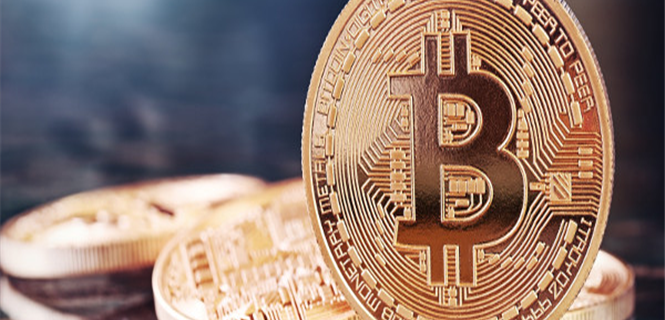What is Bitcoin?

The open source, peer-to-peer digital currency is far removed from traditional banking – so what exactly is bitcoin and how do you use it?
Bitcoin is a type of digital asset, most commonly defined as a virtual, digital or crypto- currency.
Bitcoin was invented by Satoshi Nakamoto, who published the payment system in a whitepaper in 2008. Released as open-source software in 2009, the bitcoin system is peer-to-peer which means that transactions take place without the need for a third-party. These transactions or payments are then recorded in a public distributed ledger called the blockchain, which uses bitcoin as its unit of account.
The blockchain is the backbone of bitcoin, serving as a financial ledger without any trusted central authority – this means that it is decentralized and no single person or institution owns the currency.
With every new transaction, recordings are added as ‘blocks’, which each block added in a linear, chronological order. Described in simple traditional banking terms – the blockchain is the full history of banking transactions, while the blocks are like individual bank statements. Bitcoins do not physically exist, instead there are only these records of transactions and balances.
The unit of currency in the bitcoin system is, simply, bitcoin. There are three symbols used to express bitcoin – BTC, XBT and ?. Bitcoins can be split down into alternative units such as millibitcoin (mBTC), microbitcoin (µBTC) and satoshi. Satoshi, named in honour of the bitcoin founder, is one hundred millionth of a bitcoin – the smallest amount possible.
You can acquire bitcoins as payment for a service or goods or through purchase at bitcoin exchanges.
Bitcoins, however, can be created by anyone – all you have to do is help process payments into the distributed ledger. By offering your own compute power to verify and record payments, bitcoins are created as a reward or payment for your services. This activity is widely known as bitcoin mining.
However bitcoin mining has its limits – the bitcoin protocol states that miners can only ever create 21 million bitcoins. Although restricted to 21m, these bitcoins can be split into the aforementioned smaller units such as microbitcoins.
The value of a single bitcoin rests largely on supply and demand. When bitcoin demand increases, so does the price. If bitcoin demand falls, so does the value of the currency. Due to the fact that bitcoin is in limited circulation and new bitcoins are created at a predictable and decreasing rate, demand must follow this level of inflation to ensure stability. Because bitcoin is still a small market, it doesn’t take huge amounts of money to move the market up or down – this means that the currency is still very volatile.
Getting started with bitcoin is easy – all you need is an address. You can get these using an account at an exchange or online wallet service. The address is a 26-35 alphanumeric character beginning with the number one of three. The address represents the destination for a bitcoin payment.
In order to buy and sell with bitcoin, you must have a digital wallet. A digital wallet stores all the necessary information needed in order to transact bitcoins. As bitcoin uses public-key cryptography, in which one private and one public key is generated, a digital wallet can be seen as a collection of these keys.
For security, each transaction must be digitally signed, with every transaction needing a bitcoin address and a private key. The bitcoin address is generated randomly as a series of letters and numbers, while the private key is another set of numbers and letters which remain secret. Before sending bitcoins, the private key must be used to send three pieces of key information:
Input – the record of which bitcoin address was used to send the bitcoins to you
Amount – The amount of bitcoins you wish to send
Output – The recipient’s bitcoin address
The three bits of information are sent via private key from your bitcoin wallet to the wider bitcoin network. Miners then verify and record the transaction, putting the completed block into the ledger. The payment is then cleared and completed.
Source: CBR





























